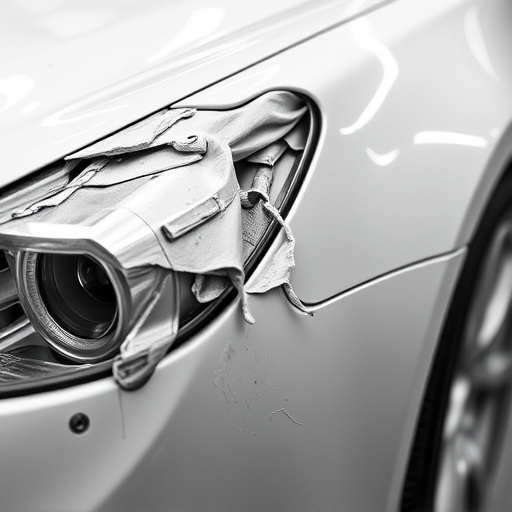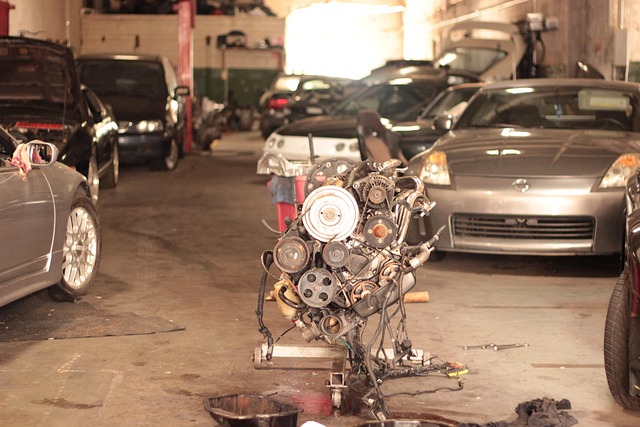Structural adhesive systems, utilizing potent chemical adhesives, offer unparalleled strength and durability for diverse industries, notably automotive repairs. Versatile, strong, and precise, they enhance manufacturing, reduce waste, and enable lightweight designs. Evolving with eco-friendly trends and bio-inspired formulations, these systems are poised to expand into extreme conditions, solidifying their role as premier bonding solutions across sectors like aerospace, construction, classic car restoration, and future space exploration.
Structural adhesive systems offer durable bonding solutions for a variety of industries, from construction to manufacturing. This article delves into the fundamentals of these advanced systems, exploring their key components and numerous advantages. We also examine real-world applications and highlight emerging trends in adhesive technology, underscoring why structural adhesives are indispensable in today’s world, providing stronger and more efficient bonds.
- Understanding Structural Adhesive Systems: The Basics
- Key Components and Advantages of These Systems
- Applications and Future Trends in Adhesive Technology
Understanding Structural Adhesive Systems: The Basics

Structural adhesive systems are a critical component in ensuring robust and lasting bonds between various materials, making them indispensable across diverse industries. These systems differ from traditional bonding methods by utilizing strong chemical adhesives to create secure connections. By carefully selecting and applying the right adhesive, these systems offer unparalleled strength, flexibility, and durability, especially in high-stress applications.
In the realm of car repair services, for instance, structural adhesives play a pivotal role in auto collision centers, enhancing the precision and effectiveness of Mercedes Benz repair processes. They are employed to fuse metal panels, ensure water tightness, and maintain structural integrity, ultimately contributing to safer and more reliable vehicle restorations.
Key Components and Advantages of These Systems

Structural adhesive systems are designed to create strong, lasting bonds between various materials, making them indispensable in numerous industries. These systems consist of several key components: resins, hardeners, and additives. Resins, the primary bonding agent, come in different types, each offering unique properties for specific applications. Hardeners initiate chemical reactions that strengthen the bond, enhancing durability. Additives are used to modify resin properties, such as viscosity or cure speed, ensuring optimal performance during application.
One of the significant advantages of structural adhesive systems is their versatility. They offer superior bonding strength compared to traditional fastening methods, enabling the assembly of complex structures in sectors like automotive, aerospace, and construction. This technology also facilitates lightweight design, reducing material waste and improving energy efficiency. Moreover, these adhesives provide a precise, mess-free application, making them ideal for intricate vehicle repair services and tire services, where accuracy is paramount.
Applications and Future Trends in Adhesive Technology

The versatility and reliability of structural adhesive systems have made them indispensable across various industries. From automotive manufacturing to aviation and construction, these advanced bonding solutions offer seamless integration, enhancing product durability and performance. In auto body services, for instance, structural adhesives play a pivotal role in classic car restoration, ensuring precise assembly and long-lasting strength despite the delicate nature of vintage vehicles. This technology is also revolutionizing the way fender benders and other minor accidents are handled, allowing for faster repair times and superior results compared to traditional fastening methods.
Looking ahead, adhesive technology is poised for significant growth and innovation. Future trends include the development of eco-friendly adhesives that reduce environmental impact, as well as bio-inspired adhesives mimicking natural bonding mechanisms. Additionally, advancements in material science will lead to adhesives capable of withstanding extreme conditions, expanding their applications beyond terrestrial boundaries into space exploration and marine engineering. These developments promise to further solidify structural adhesive systems as the go-to choice for durable bonding solutions across diverse sectors.
Structural adhesive systems have evolved to become indispensable in various industries, offering durable bonding solutions for demanding applications. By combining advanced polymers with precise formulations, these systems provide superior strength and flexibility. As technology advances, future trends in adhesive technology will continue to revolutionize sectors such as aerospace, automotive, and construction, ensuring stronger, lighter, and more efficient structures.














